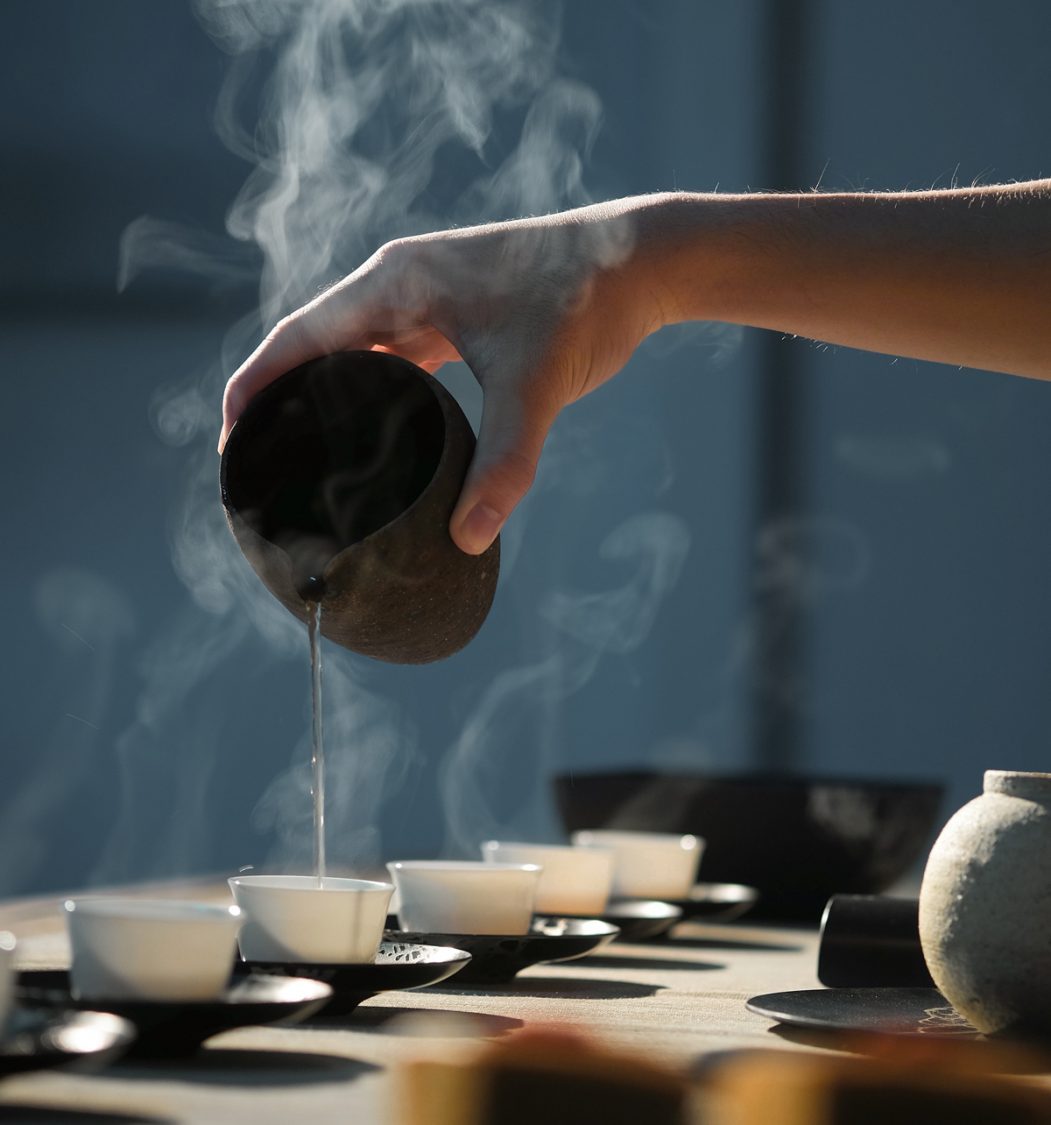
Annyeong, yeoreobun! ^^ This week, we are going to focus on something that may be able to bring peace of mind, amongst the hectic schedule that we all have while hustling and bustling through our lives – the South Korean tea culture.
In ancient times, humans considered tea to be an edible plant or medicine, but it gradually turned into a beverage thanks to its unique taste, stimulating effect and easy preparation. Eventually, tea drinking developed into a cultural form, and South Korea has adapted this culture too. The tea culture appeals to all five senses – taste, sight, smell, touch, and hearing; hence requiring much more preparation and thought to the experience.

The Korean tea ceremony or darye (茶禮) is a traditional form of tea ceremony practiced in Korea. Darye literally refers to “etiquette for tea” or “tea rite” and has been kept among Korean people for over a thousand years.
South Korea owes its tea heritage to the Buddhist monks who travelled the globe to teach and spread enlightenment of the self and the alertness that tea brings to Buddhist meditations. Korean Buddhist tea ceremonies focused on spiritual awakening which symbolised purification, absorption, and meditation attained by making and drinking tea. Hon-ta, a tea ceremony, was part of the Buddhist tradition in which green tea was offered to the Buddha residing in local temples.

Nowadays, tea ceremonies are reintroduced in South Korea as a means for the people to learn tranquility and harmony in the fast-paced modern culture, and continuing in the long tradition of intangible Korean art.
Tea is poured initially by a tea hostess into warmed cups from a heated teapot at a distance above the first cup so as to create a controlled flow of tea with attractive bubbles. This is done to create good luck. The first serving of a new batch of tea is poured directly into the cups, a little at a time, back and forward three times until the cups are filled, in order to spread equally the stronger tea that emerges from the bottom of the teapot. No water must remain in the pot, or it would develop an undesirable bitter taste.

Here are the official 7 steps to a tea ceremony:
- The host will start the official ceremony by first heating the pot, cups and decanting bowl with hot water, then after this is complete, will pour the tea leaves – usually green tea – into the pot.
- Then the host pours hot water onto the leaves and will then pour out the water very quickly, thereby rinsing the leaves of any dust and opening them up slightly.
- Then, the host will pour the hot water into the decanting bowl and allow it to cool to the correct temperature for the tea they are using. This depends on when the tea is picked; tea picked earlier in the season, such as the first buds picked in early April, will be steeped at lower temperature (60–65 °C or 140–149 °F) than tea leaves picked in June (70–75 °C or 158–167 °F).
- Once the water is at the right temperature, the host will pour the water into the pot and steep it for anywhere from 20 seconds to two to three minutes, depending on the tea.
- After steeping is complete, the host pours the tea into the decanting bowl, which serves to get the water off the leaves in the pot and also to give the tea an even mixture.
- Then it is poured into the cups.
- The guests will wait until the host or master picks up their cup first, then will pick up theirs. This is repeated until they are finished, which sometimes can be several hours later. The whole ceremony is very relaxing and is a wonderful way to get to know someone or to ease into a business transaction.
It certainly is something new, and may stop us from the busy minds from constantly running, isn’t it? Well, the author will now start some of her own tea-making at home too! ^^ Til next time, annyeong~
2 replies on “Korean Tea Culture”
This was such an interesting post to read through!
LikeLike
[…] Outdoor Exhibition Stall, and be sure to stop by the Cultural Experience Hall to participate in a Korean tea ceremony or try on a hanbok, the country’s national dress. (You can click on the links for further […]
LikeLike